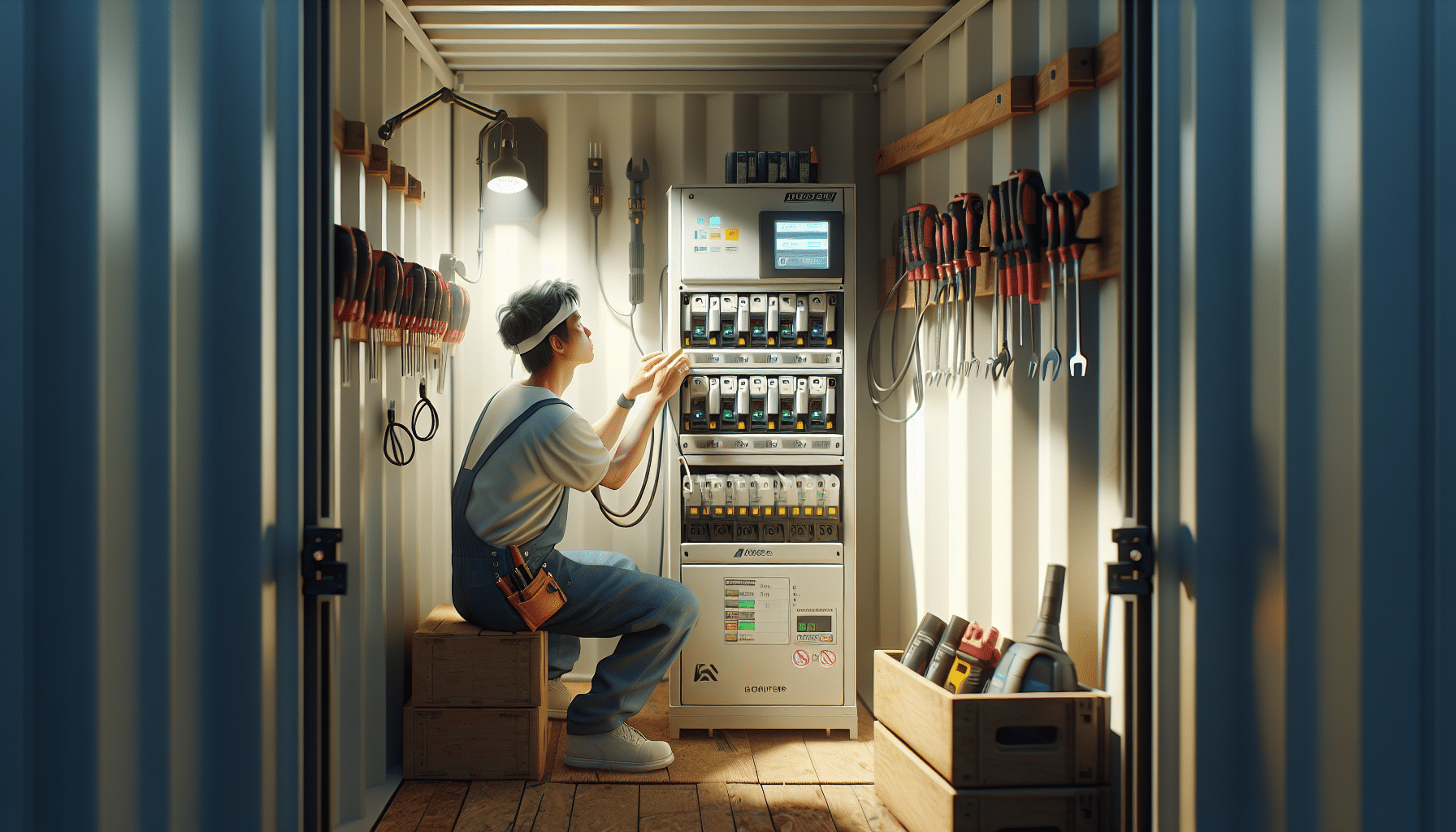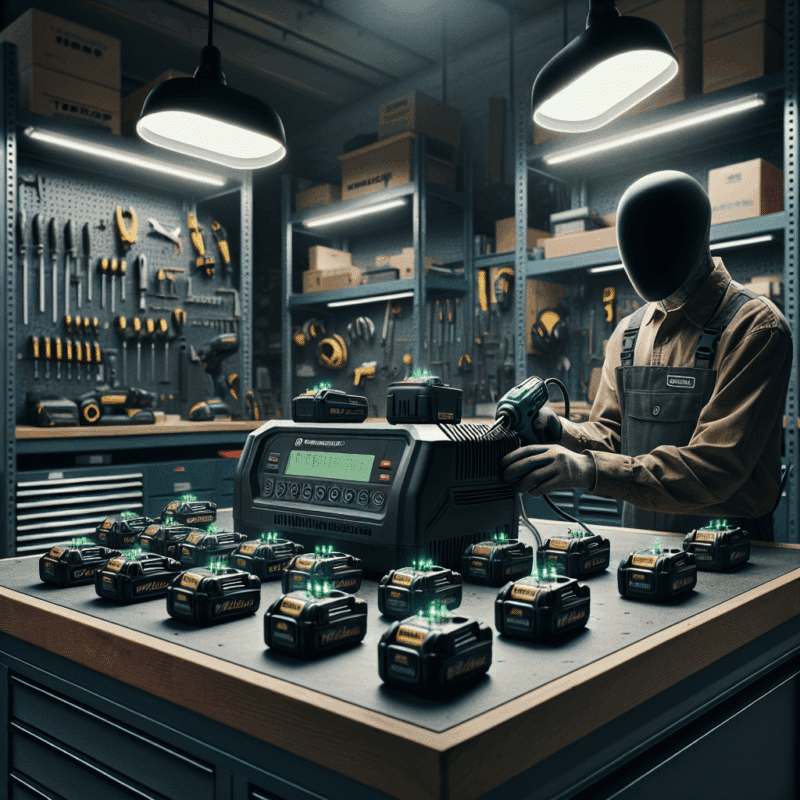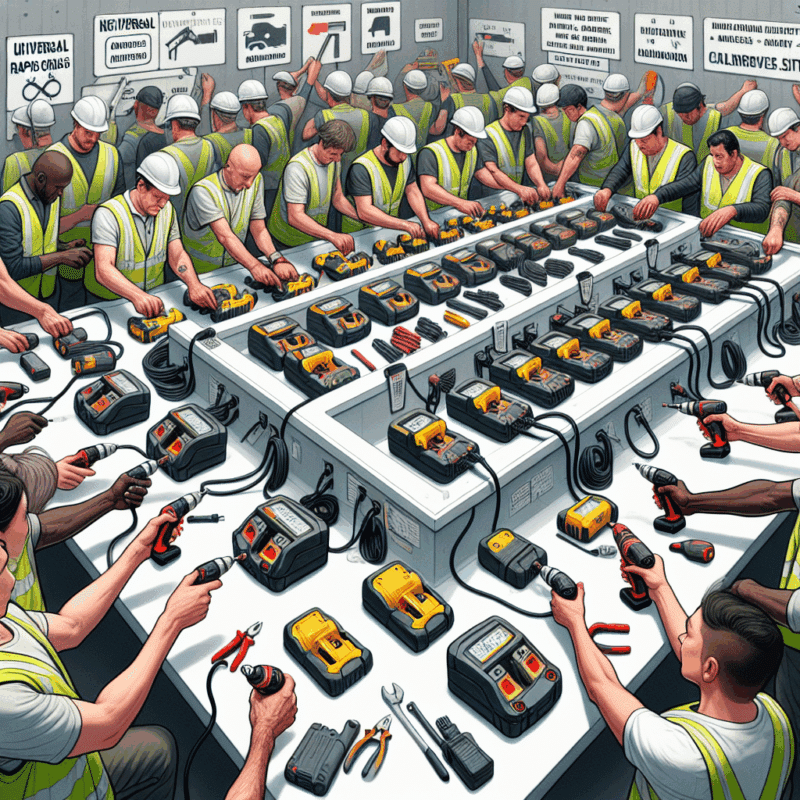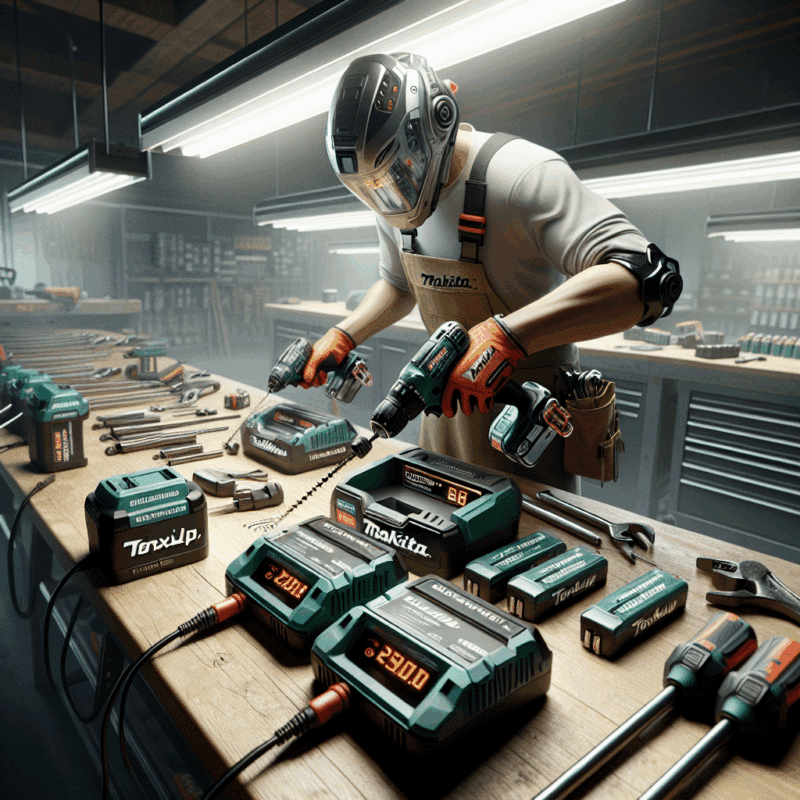Avoid Downtime: Proven ROI with Fast Makita LXT-Compatible Chargers
In This Article
- Makita fast chargers greatly reduce power tool downtime.
- They boost productivity by maintaining battery readiness.
- Fast chargers offer a tangible return on investment in days, not weeks.
- Multi-bay options support team-wide tool usage without delay.
- Third-party chargers may reduce upfront cost but introduce long-term risk.
- Smart charging setups improve workshop safety and efficiency.
- Monitoring battery KPIs enhances long-term equipment planning.
- Investing in Makita fast chargers equals sustained profitability and project delivery assurance.
Why Fast Charging Reduces Downtime
The Impact of Battery Wait Times
Makita fast chargers have revolutionised the power tools arena by addressing one of the most persistent frustrations in construction and workshop settings—excessive battery wait times. Waiting for batteries to charge can halt productivity entirely, leading to significant delays on critical tasks. This issue amplifies when crews operate on tight schedules or in remote environments where electricity access is limited or inconsistent.
The average charging cycles for traditional chargers can vary between 60 to 90 minutes. Conversely, Makita fast chargers can deliver a full charge in as little as 22 to 45 minutes, depending on the battery type. Over a standard workday, the cumulative time saved by using fast chargers can equate to several hours previously lost to battery downtime. This recovered productivity directly translates into improved project delivery and cost efficiency.

ROI Gains from Rapid Charging Stations
Fewer Delays, More Output
The typical contractor understands that time is money. Investing in Makita fast chargers allows users to regain hours throughout the week, which increases billable work. By eliminating the lag between battery depletion and regaining full functionality, teams can focus their effort on task completion rather than equipment logistics. This accelerates project turnover without necessitating additional personnel or extended work hours.
The return on investment becomes particularly clear when consideration is given to the total cost per productive man-hour. For instance, if a single team member costing £40/hour loses one hour per day to battery waiting, this translates to £200 weekly in lost productivity. With a Makita fast charger priced competitively and built for longevity, the charger quickly pays for itself within weeks, not months.
“Implementing Makita fast chargers halved our idle time and gave us an extra two days per project.” – Site Manager, Midlands Construction
Smart Workshop Charging Setups
Organising a smart charging station within a workshop or mobile setup can further enhance the gains from Makita fast chargers. Properly designed charging areas reduce clutter, prevent charger damage, and enable multiple batteries to recharge simultaneously without confusion or cross-handling of tools. It also ensures that the most used batteries are always fresh and ready for immediate deployment.
Best practices include wall-mounted racks for charger stability, numbered docking for battery rotation tracking, and cable management systems to prevent tripping hazards. Integrating these approaches with Makita’s dual-port fast charger models yields even greater benefit for medium to large teams relying on high-volume usage.
Comparing Fast Charger Options
Makita offers several fast chargers under its LXT system, including the DC18RC, DC18RD (dual port), and rapid automotive DC18SE. These chargers are compatible with the entire 18V LXT lithium-ion battery line, making them highly versatile across a wide range of Makita tools.
The DC18RC is a single-port solution capable of charging 5.0Ah batteries in under 45 minutes. The DC18RD adds dual-port functionality without compromising speed, which is ideal for sustaining larger operations. The DC18SE, tailored for vehicles, charges via 12V sockets, supporting teams on the move. Compared to standard competitors lacking integrated CPU-controlled charging and cooling fans, Makita fast chargers offer reduced risk of battery overheating and extended overall battery life.
Common Power Tool Bottlenecks and Solutions
Delayed progress often stems from underestimating power tool bottlenecks. These issues are not always caused by tool failure but inefficient charging systems. More than 30% of tool downtime in field reports is attributed to batteries that are either fully drained or improperly charged.
Mitigating this consistent hurdle relies on forward-thinking solutions. Assigning spare batteries per user is one such option, but it increases equipment cost. A more financially efficient alternative is equipping each job site or van with a Makita fast charger. By doing so, users can recharge one battery while using another—especially if synchronised with work breaks and shift rotations.
Real-World ROI: Field Reports
Contractors across the UK are already reaping the benefits of integrating Makita fast chargers into their workflows. From small woodworking studios to large-scale industrial operations, feedback remains consistent—faster charging means fewer delays and smoother operations.
One commercial roofing firm noted that after switching entirely to LXT-compatible Makita fast chargers, tool-related delays dropped by 70%. This improvement enabled them to take on 12% more projects per quarter. Similarly, a landscaping business found they could complete three additional jobs per week simply because their crew no longer had to stagger around charger access.
These examples underscore not only the functionality of fast chargers, but their broader economic impact. Time lost to charging is time that could be generating revenue. Learn more about Optimising Power Tool Charging for Maximum Productivity
Using Metrics to Track Charging Efficiency
Measuring the effectiveness of Makita fast chargers should be part of every operational audit. Recommended KPIs include average tool downtime per team member, average battery state at initial use, and recharge-to-use turnover rates. Tracking these metrics can reveal subtle inefficiencies that build up over time.
Software platforms used in fleet management and lean production models can be adapted for this purpose. Daily logging and digital timetracking allow accurate calculation of charging ROI. Makita’s own digital charging indicators—built into many fast charger models—show real-time power input and offer alerts on battery health.
Costs vs Benefits: The Investment Breakdown
While the initial cost of a high-end Makita fast charger is marginally more than standard units, its long-term yield far outpaces the upfront expenditure. Consider an example where a DC18RD dual charger is purchased for £110. If it saves just 30 minutes of tool downtime daily for a team billing £300/day, the investment is returned within two working days.
In contrast, underusing tool productivity by persisting with outdated chargers has recurring hidden costs. Over five years, the cost of inefficiency can exceed thousands of pounds. Makita chargers also reduce the risk of overcharging—thereby prolonging battery life and reducing the cycle replacement costs.
With warranty support and rugged design, the durability of Makita fast chargers ensures this investment continues to deliver value over multiple toolsets and teams. How preventative maintenance improves return on investment
How Multi-Bay Chargers Uplift Large Crews
For operations involving large teams, such as in civil engineering or logistics infrastructure, the use of Makita multi-bay fast chargers becomes vital. These allow simultaneous charging of 4–8 batteries—significantly raising the energy turnaround rate compared to basic models.
Scheduled charging rounds combined with dedicated charging zones create a circular battery flow across multiple teams. This methodology removes downtime overlaps and ensures battery power is always available as soon as tools are needed. Enhanced crew oversight comes via LED diagnostic displays and error codes that promptly alert to faults or battery failures.
Some models also include USB ports, enabling handheld device charging to complement tool readiness. Read a related article
Are Third-Party Chargers Worth It?
Third-party chargers often lure buyers with attractive price points. However, for professional use, the long-term reliability and safety of non-OEM units remain questionable. Unregulated charging patterns may degrade battery life, cause overheating, or fail to deliver true “fast charging” despite the label.
In contrast, Makita fast chargers are precision tooled for compatibility with LXT batteries. They feature smart CPU monitoring, built-in fans for thermal regulation, and unique digital communication with the battery for optimal conditioning. As a result, battery life is maximised, user safety is preserved, and tool reliability increases overall.
In environments where consistent delivery is critical, saving £30 upfront isn’t worth risking £3000 in failed project earnings. EU compliance essentials for your business expansion
Conclusion: Stay Powered to Stay Profitable
[CONCLUSION_CONTENT]
Great guide on avoid-downtime-fast-makita-lxt-compatible-charger-roi – Community Feedback
How do fast Makita LXT-compatible chargers reduce downtime?
Fast Makita LXT-compatible chargers minimise the time batteries spend out of service, ensuring your tools are ready to go and reducing workflow interruptions.
What is the ROI of investing in rapid charging solutions for power tools?
Investing in rapid chargers means less waiting for batteries, increased daily output, and reduced unproductive gaps—delivering measurable ROI through higher productivity.
How can I maximise battery charger efficiency on busy sites?
Choose multi-bay fast chargers, monitor battery metrics, and strategically place chargers across work zones to keep tools powered and avoid bottlenecks.











